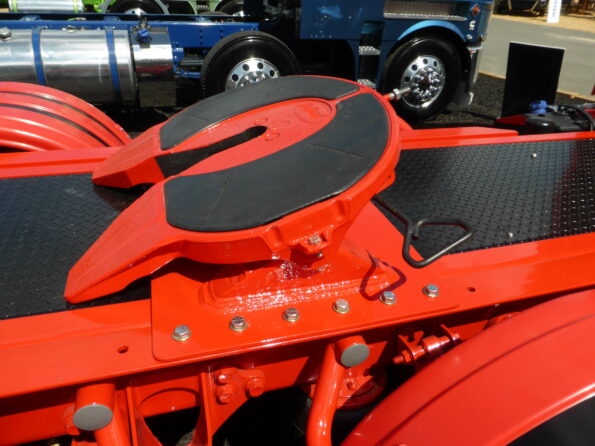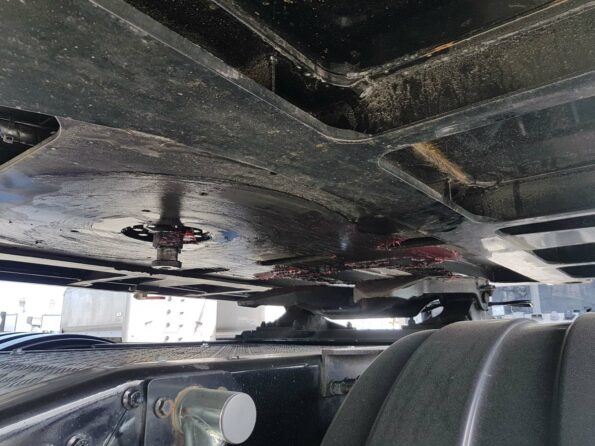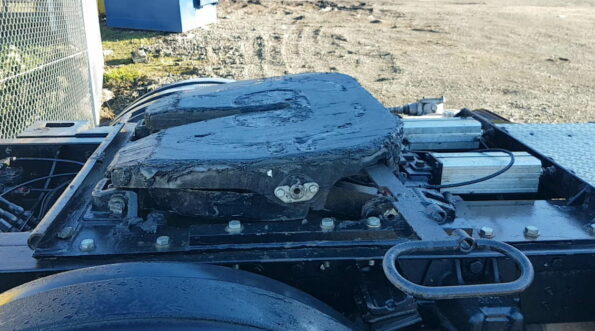A turntable or fifth wheel is a greased metal disk on a prime mover that supports the weight of a semitrailer and provides a pivot point around which the two vehicles are articulated. Common brands are Holland and Jost.

When a prime mover connects to a semitrailer, the semitrailer has a flat metal plate at the front with a metal pin – a kingpin – sticking out of it. The kingpin slides into a slot in the turntable, and jaws grip around it.

To release the jaws, the driver pulls the locking handle.
Looking after the turntable
It’s important that when reversing to couple the trailer to the prime mover that the kingpin enters the slot rather than impacting the side of the turntable, which can damage it.
Greasing the turntable

The semitrailer can transmit thousands of kilograms of force onto the turntable, and while driving, the skidplate of the semitrailer is constantly moving on the wheel. Without grease, the turntable would wear out quickly; rebuilding them is expensive.
To apply the grease, use a trowel or similar tool. Follow the manufacturer’s recommendations for how much grease to use; too much grease means that grease ends up outside the fifth wheel and can get on the truck, on you, and on the ground causing a slip hazard. Spread the grease around 2/3 to 3/4 of the way up the fifth wheel. Connecting to a trailer will smear the grease up to the top of the fifth wheel.
When you do your pre-start check, check the turntable has enough lube on it; there should be an even sheen of grease over the whole thing. It’s advisable to re-lube your turntable at the start of each season (four times a year), or if you see that it is dry, or if you hear metal scraping sounds from it when you are turning. Some drivers do it based on kilometres driven, e.g. every 20,000.
It’s important to get rid of the old grease before you reapply grease. This is because the old grease will be contaminated with grit and dirt from the road, and also the grease compound will break down over time, reducing its effectiveness. Turntable grease is usually high-pressure lithium.
If you don’t want to use grease, you can use a lube plate or friction plate (on the trailer) plus a slick plate or slip plate (on the turntable) which will be made from plastic (polyethylene), sometimes with embedded graphite. Because they usually need to be paired, it makes it tricky if you’re swapping trailers. These are common when using a turntable when towing an RV (camper trailer). They are usually a bit more expensive than using grease, but much less messy. Some slip plates do take graphite lubricant – check with the manufacturer.
Checking the turntable
When the turntable is connected to the semitrailer, check that the turntable is flat to the skidplate of the semitrailer. Check the bolts that connect the turntable to the chassis. Check that the locking jaws lock properly around the kingpin.
Adjusting the turntable
The turntable can be adjusted using a screw which loosens or tightens the lock bar. To adjust this properly, you need a lock test.
